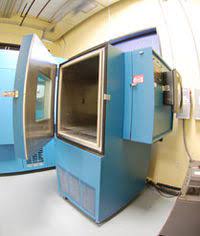The Secrets of Climatic Chambers: A Comprehensive Guide
Introduction:
Climatic chambers, also known as environmental chambers or climate chambers, are specialized enclosures designed to simulate and control environmental conditions for testing and research purposes. These chambers play a crucial role in various industries, including electronics, automotive, pharmaceuticals, and aerospace. In this comprehensive guide, we will delve into everything you need to know about climatic chambers, from their functions and types to their applications and benefits.
-
Functions of Climatic Chambers:
Climatic chambers are designed to replicate specific environmental conditions to assess the performance and reliability of products under different scenarios. The primary functions of these chambers include:
a. Temperature Control: Climatic chambers can simulate extreme temperature variations, from sub-zero temperatures to high heat, to evaluate how products respond to different thermal conditions.
b. Humidity Control: Chambers can regulate humidity levels, creating conditions ranging from arid environments to high humidity. This is crucial for assessing the impact of moisture on various materials and products.
c. Altitude Simulation: Some climatic chambers are equipped to replicate high-altitude conditions, allowing researchers to study the effects of reduced air pressure on products.
d. Solar Radiation Simulation: Certain chambers can simulate sunlight to evaluate the impact of solar radiation on materials, helping in the testing of products such as solar panels and outdoor equipment.
-
Types of Climatic Chambers:
a. Temperature Chambers: These chambers focus primarily on controlling temperature, providing a range of conditions from extreme cold to intense heat.
b. Humidity Chambers: Specialized for studying the effects of humidity, these chambers can create environments with varying levels of moisture.
c. Thermal Shock Chambers: Designed to rapidly change temperature conditions, thermal shock chambers are essential for assessing a product’s ability to withstand sudden temperature variations.
d. Altitude Chambers: These chambers simulate low-pressure environments, allowing researchers to test products under conditions found at high altitudes.
e. Combined Chambers: Some climatic chambers integrate multiple functions, combining temperature, humidity, and other environmental factors for comprehensive testing.
3. Applications of Climatic Chambers:
Climatic chambers find applications across diverse industries due to their ability to simulate real-world conditions. Some notable applications include:
a. Electronics: Climatic chambers are widely used to test electronic components and devices for performance under various temperature and humidity conditions.
b. Automotive: Automotive manufacturers use climatic chambers to assess the durability and functionality of vehicles, including their ability to withstand extreme temperatures and weather conditions.
c. Pharmaceuticals: In the pharmaceutical industry, climatic chambers play a vital role in testing the stability of drugs and vaccines under different environmental conditions.
d. Aerospace: Aerospace engineers use climatic chambers to evaluate the impact of temperature, humidity, and altitude on aircraft components and materials.
e. Material Testing: Researchers use climatic chambers to study the behavior of materials under different environmental stressors, helping in the development of durable and reliable products.
4. Benefits of Using Climatic Chambers:
a. Reliability Testing: Climatic chambers enable manufacturers to conduct rigorous reliability testing, ensuring that products can withstand a wide range of environmental conditions.
b. Cost Savings: Identifying potential issues and weaknesses in products during testing in climatic chambers can prevent costly recalls and repairs after products have been released to the market.
c. Accelerated Testing: Chambers allow for accelerated testing, enabling researchers to simulate years of real-world conditions in a relatively short period, facilitating faster product development.
d. Customization: Climatic chambers can be customized to replicate specific environmental conditions relevant to a particular industry or product, providing tailored testing solutions.
e. Quality Assurance: The use of climatic chambers contributes to enhanced quality assurance by ensuring that products meet or exceed performance standards under a variety of environmental challenges.
Conclusion:
Climatic chambers play a pivotal role in ensuring the reliability and durability of products across various industries. As technology advances, these chambers continue to evolve, offering more sophisticated capabilities for precise environmental simulation. By understanding the functions, types, applications, and benefits of climatic chambers, industries can make informed decisions about incorporating these essential tools into their research and development processes.


